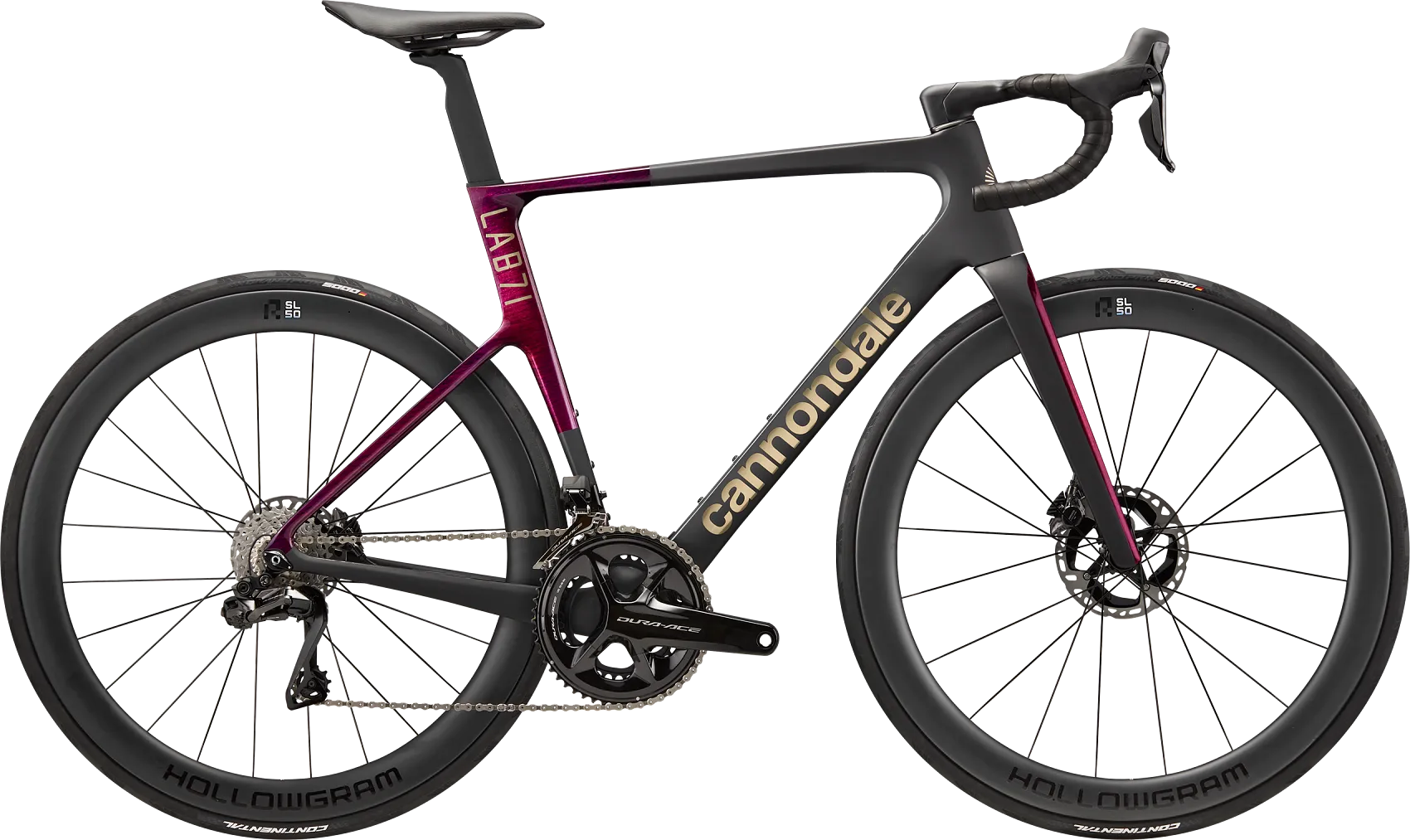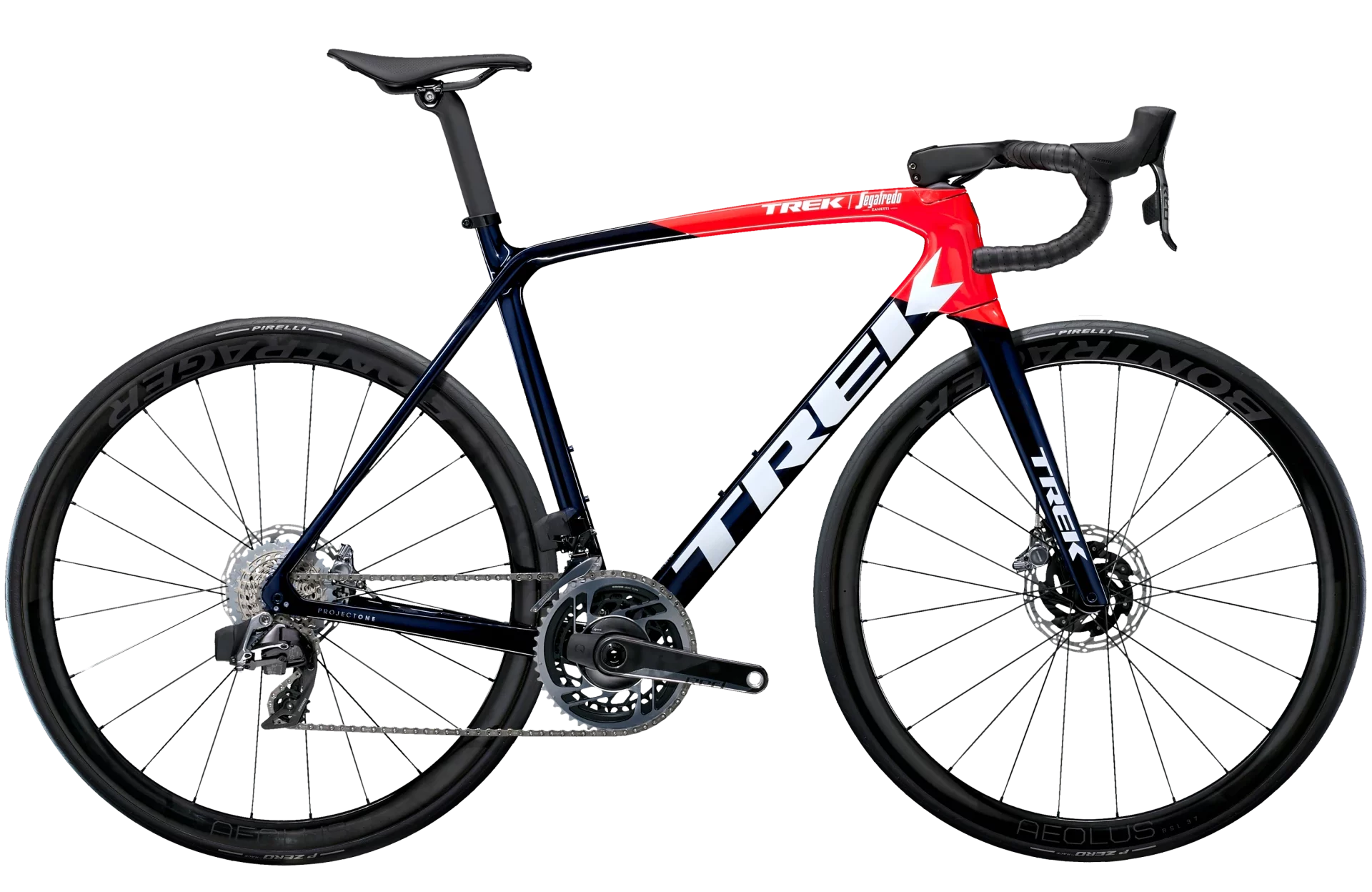This article compares the Cannondale Supersix EVO and Trek Emonda.
I’ll help you understand the bike model lineups, specifications, and suggested retail prices in USD. I’ll explain the carbon fiber technology (Cannondale BallisTec and Trek OCLV) and innovative frameset technologies on each bike.
The objective is to provide you with a clearer understanding of Cannondale Supersix EVO and Trek Emonda.
| Cannondale Supersix EVO | Trek Emonda | |
|---|---|---|
| Type of bike | Lightweight, all-rounder | Lightweight, all-rounder |
| Frame material | LAB71 (Series 0) BallisTec Hi-Mod BallisTec | OCLV 800 carbon OCLV 500 carbon |
| Frame sizes | 44, 48, 51, 54, 56, 58, 61 | 47, 50, 52, 54, 56, 58, 60, 62 |
| Groupset | Shimano, SRAM (12-speed) | Shimano, SRAM (12-speed) |
| Brakes | Hydraulic disc | Hydraulic disc |
| Price (USD) | $4,500 to $15,000 | $4,999 to $13,199 |
Cannondale Supersix EVO

The Cannondale SuperSix EVO is an all-rounder race bike.
For years, the Cannondale SuperSix EVO been known for being light, fast, and stiff on the climbs. At one point, many weight weenies were building sub-6kg bikes with the Cannondale SuperSix EVO.
In 2023, Cannondale launched the ultra-premium LAB71 version featuring their latest Series 0 (LAB71) carbon, taking over from the Hi-MOD version as the top-of-the-line offering. Three carbon grades are now used for the SuperSix EVO; BallisTec LAB71, BallisTec Hi-MOD, and BallisTec.
All Cannondale SuperSix EVO models are now electronic shifting and disc brake only. The flagship LAB71 models are equipped with Shimano Dura-Ace Di2 only.
| Model | Frame material | Groupset | Wheelset | Retail price (USD) |
|---|---|---|---|---|
| Cannondale SuperSix EVO LAB71 | LAB71 (Series 0) carbon | Shimano Dura-Ace Di2 (R9200) | HollowGram R-SL 50 | $15,000 |
| Cannondale SuperSix EVO Hi-MOD 1 | Hi-MOD carbon | SRAM Red eTap AXS | HollowGram R-SL 50 | $13,050 |
| Cannondale SuperSix EVO Hi-MOD 2 | Hi-MOD carbon | Shimano Ultegra Di2 (R8100) | HollowGram R-SL 50 | $8,300 |
| Cannondale SuperSix EVO 1 | Carbon | SRAM Force eTap AXS | HollowGram R-S 50 | $6,500 |
| Cannondale SuperSix EVO 2 | Carbon | Shimano Ultegra Di2 (R8100) | HollowGram R 45 | $5,500 |
| Cannondale SuperSix EVO 3 | Carbon | Shimano 105 Di2 (R7100) | DT Swiss R470 | $4,500 |
Cannondale SuperSix Evo vs others
Trek Emonda

The Trek Emonda is a lightweight bike for the high mountains.
The lightest Trek Emonda frame weighs less than 700g using Trek’s OCLV 800 carbon. This is the bike Richie Porte rode to his third place in the 2020 Tour de France.
The SLR is the lightest and most expensive atop the Trek Emonda models. There are six Emonda SLR options, specced electronic shifting groupsets from SRAM or Shimano.
Next in line is the SL, the mid-range, more budget-friendly option. It has the same frame design and geometry as the SLR but uses the OCLV 500 carbon instead. The groupset choices are Shimano Ultegra Di2, Shimano 105 Di2, SRAM Force AXS, or SRAM Rival AXS.
The Trek Emonda SLR and SL framesets are also available separately.
| Model | Frame material | Groupset | Wheelset | Retail price (USD) |
|---|---|---|---|---|
| Trek Emonda SLR 9 AXS | OCLV 800 carbon | SRAM Red eTap AXS | Bontrager Aeolus RSL 37 | $13,199 |
| Trek Emonda SLR 9 | OCLV 800 carbon | Shimano Dura-Ace Di2 (R9200) | Bontrager Aeolus RSL 37 | $12,749 |
| Trek Emonda SLR 7 AXS | OCLV 800 carbon | SRAM Force eTap AXS | Bontrager Aeolus Pro 37 | $9,699 |
| Trek Emonda SLR 7 | OCLV 800 carbon | Shimano Ultegra Di2 (R8100) | Bontrager Aeolus Pro 37 | $8,999 |
| Trek Emonda SLR 6 AXS | OCLV 800 carbon | SRAM Rival eTap AXS | Bontrager Aeolus Pro 37 | $8,399 |
| Trek Emonda SLR 6 | OCLV 800 carbon | Shimano 105 Di2 (R7100) | Bontrager Aeolus Pro 37 | $7,699 |
| Trek Emonda SL 7 AXS | OCLV 500 carbon | SRAM Force eTap AXS | Bontrager Aeolus Pro 37 | $6,699 |
| Trek Emonda SL 6 | OCLV 500 carbon | Shimano 105 Di2 (R7100) | Bontrager Aeolus Elite 35 | $4,999 |
Trek Emonda vs others
Cannondale vs Trek carbon fiber
Cannondale BallisTec Carbon
Cannondale BallisTec is a proprietary carbon fiber construction technique used to manufacture Cannondale bicycle frames.
The BallisTec carbon technology utilizes advanced engineering and construction methods to create frames that balance strength, stiffness, and weight. It involves the precise layering and placement of carbon fiber sheets, which are impregnated with epoxy resin and then molded under high pressure and temperature.
The BallisTec carbon is available in three grades.
- BallisTec LAB71 is Cannondale’s latest advancement in carbon construction. Also known as the Series 0 carbon, LAB71 is designed to be the lightest and most advanced, taking over from the Hi-MOD carbon. LAB71 frameset delivers exceptional performance, weight reduction, and overall ride quality.
- BallisTec Hi-MOD stands for High-Modulus, which refers to using high-modulus carbon fibers in the frame. This results in a stiffer and lighter structure, providing enhanced power transfer and a more responsive ride feel. Hi-MOD carbon frames are designed for riders who prioritize performance, stiffness, and weight savings.
- BallisTec is the standard carbon in Cannondale’s frames, which offers a balance of weight, stiffness, and durability at more affordable prices.
Trek OCLV carbon
The OCLV (Optimum Compaction, Low Void) carbon is a proprietary carbon fiber manufacturing technology developed by Trek.
- Optimum Compaction refers to the heat and pressure applied during the curing process to squeeze out excess resin and ensure that the carbon layers are compacted to the optimal density.
- Low Void refers to the goal of reducing microscopic air pockets or voids that can occur in the carbon fiber and create weaknesses.
One of the key advantages of OCLV carbon is its ability to achieve an optimal balance between stiffness, strength, and weight. Trek engineers carefully tune the carbon layup and utilize varying modulus carbon fibers to create stiff frames in certain areas to maximize power transfer while maintaining compliance in other areas to enhance comfort and ride quality.
The OCLV carbon is available in 800 and 500 series.
- OCLV 800 is the highest-grade carbon fiber used by Trek. The carbon modulus is higher in OCLV 800, making it stiffer and lighter. The manufacturing process is more refined, using more advanced carbon and resins, leading to a bike frame that provides top performance levels for stiffness, weight, and strength. OCLV 800 is used in all models with SLR.
- OCLV 500 is a lower-grade carbon but still offers a high level of performance. It has a slightly lower carbon modulus, meaning it’s a bit less stiff and heavier than OCLV 800. OCLV 800 is used in all models with SL.
It’s worth noting that the different OCLV grades don’t only refer to the material itself, but also to the manufacturing techniques used to form the carbon fiber into bike frames. Higher-grade carbon requires more precise manufacturing techniques to take full advantage of its superior material properties.
Frameset technologies and innovations
Cannondale Supersix EVO and Trek Emonda framesets incorporate advanced technologies to enhance their bikes’ performance and ride characteristics.
Here’s an overview of the technologies used in each bike model.
Cannondale Supersix EVO
| Name | Description |
|---|---|
| BallisTec carbon construction | A proprietary manufacturing technology that uses meticulously woven carbon fiber material to create strong and lightweight bike frames. The goal is to maximize the stiffness-to-weight ratio, providing riders with a responsive and efficient ride experience. Available in three grades; BallisTec LAB71, BallisTec Hi-MOD, and BallisTec. |
| Delta steerer | A unique steerer tube design for seamless cable integration to, reduce frontal area and drag. |
| Bottle integration | Integrated bottle cages and bottles designed for improved aerodynamics and streamlining. |
Trek Emonda
| Name | Description |
|---|---|
| OCLV Carbon | Optimum Compaction, Low Void (OCLV). A carbon fiber technology used in Trek frames. Employs advanced layup techniques and precise carbon compaction to create lightweight, strong frames with a balanced blend of stiffness and compliance. Available in two grades; OCLV 800 and 500. A higher number indicates a higher grade carbon. |
| H1.5 geometry | Trek’s geometry design that strikes a balance between aggressive racing positioning (H1) and rider comfort (H2). H1.5 geometry provides a slightly more relaxed riding position than the racier H1 geometry, making it suitable for a wider range of riders. |
| Project One | Trek’s customization program allows riders to create personalized and unique bikes. With Project One, riders can customize various aspects of their bikes, including frame color, paint scheme, components, drivetrain, wheels, and other details. |
Where to buy
Cannondale retailers
- Cannondale retailers. Use this tool to find your nearest Cannondale retailers.
Trek shops
- Trek online shops. Australia, Austria, Canada, Germany, Netherlands, United Kingdom, United States
- Trek retailers. Use this tool to find your nearest Trek retailers.

Alex Lee is the founder and editor-at-large of Mr. Mamil. Coming from a professional engineering background, he breaks down technical cycling nuances into an easy-to-understand and digestible format here.
He has been riding road bikes actively for the past 12 years and started racing competitively in the senior category during the summer recently.